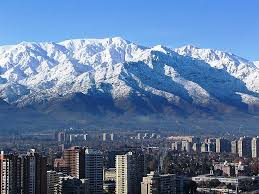When was Santiago de Chile founded?

When was Santiago de Chile founded?
When was Santiago de Chile founded? Santiago de Chile, the vibrant capital of Chile, was founded on February 12, 1541, by the Spanish conquistador Pedro de Valdivia.
Its history is rooted in colonial struggles and strategic expansion.
Pedro de Valdivia’s Expedition
Pedro de Valdivia led the Spanish expedition to establish Santiago. Seeking to expand Spanish influence, he chose this location for its fertile land and proximity to the Andes Mountains.
Choosing the Location
The site for Santiago was strategically chosen. Situated near the Mapocho River, it provided fertile soil for agriculture, water for sustenance, and a defensible position against potential indigenous resistance.
The Role of the Mapuche People
When Valdivia arrived, the indigenous Mapuche people were living in the region. The relationship between the Spanish settlers and the Mapuche was tense, leading to multiple conflicts throughout the colonial era.
The Challenges of Founding Santiago
Founding Santiago was not without challenges. Valdivia’s settlers faced attacks from indigenous groups, lack of resources, and harsh environmental conditions, all of which delayed the growth of the city.
The Strategic Importance of Santiago
Santiago’s location was crucial for both agricultural and military purposes. It allowed the Spanish to control the central valley and had access to the Pacific coast, ensuring trade routes.
Santiago’s First Years of Growth
After its founding, Santiago experienced difficult early years. The settlers struggled with food shortages, attacks from indigenous tribes, and the lack of reinforcements from Spain. Despite this, the settlement grew steadily.
Santiago as the Capital of Chile
Santiago became the capital of Chile in 1541, and this marked the beginning of its importance as a hub for governance and administration. It soon became the center of colonial Chilean life.
The Expansion and Development of Santiago
Over time, Santiago grew in both size and importance. New settlements were established, and the Spanish government expanded its control over the region, shaping the city’s infrastructure and economy.
Santiago’s Transition to Independence
By the early 19th century, Santiago became a focal point for the independence movement. It witnessed key battles and served as a base for revolutionary leaders who fought for Chile’s independence from Spain.
Modern Santiago: A Legacy of Colonial Foundations
Today, Santiago stands as a modern city with a deep colonial history. The original foundation on February 12, 1541, shaped the city’s future, with remnants of its past visible in historical architecture.
The Role of Santiago in Chile’s Independence
During the early 19th century, Santiago became the heart of Chile’s fight for independence. Key figures like Bernardo O’Higgins and José de San Martín led revolutionary movements from the city, challenging Spanish rule.
Santiago’s Growth Through the Centuries
From its humble beginnings, Santiago grew into a thriving metropolis. Over the centuries, its population swelled as it became the economic, political, and cultural center of Chile, attracting settlers from all over.
The Cultural Legacy of Santiago’s Founding
The founding of Santiago in 1541 laid the foundation for a rich cultural heritage. Spanish architecture, customs, and traditions blended with indigenous influences, creating a unique cultural identity that persists today.
Santiago’s Evolution as a Modern City
Though Santiago’s colonial past remains a significant part of its identity, the city has evolved dramatically. Modern infrastructure, skyscrapers, and a thriving economy reflect its transformation into a global urban center.
The Influence of Colonial Santiago on Contemporary Chile
Santiago’s colonial beginnings have left an indelible mark on the country’s governance, culture, and urban planning. Its strategic location and early establishment set the stage for Chile’s future success as a nation.



Leave a Reply